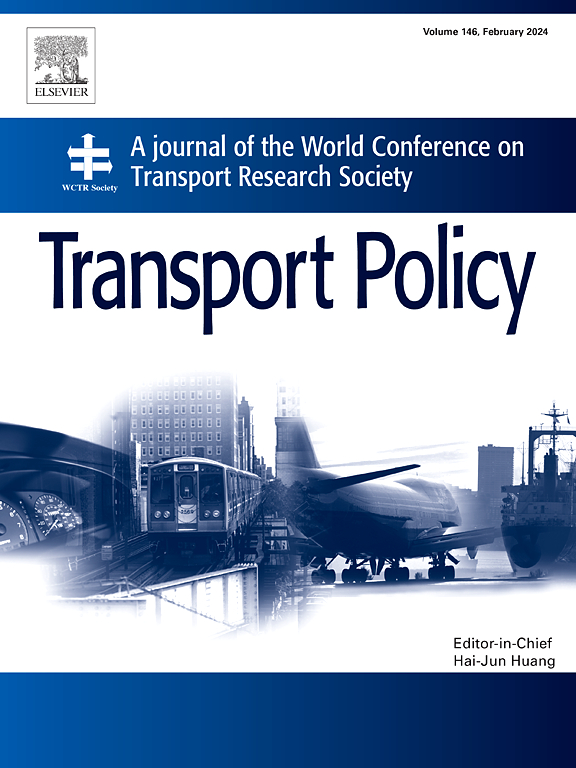超越半英里圈:衡量地铁扩建对中国北京居家旅行的影响
IF 6.3
2区 工程技术
Q1 ECONOMICS
引用次数: 0
摘要
地铁在满足人们出行需求方面发挥着重要作用,但地铁扩建带来的益处能否证明巨额投资的合理性仍是一个备受争议的问题。现有的研究使用步行距离来任意定义地铁站的覆盖范围,并且过多地关注通勤出行,从而可能低估了地铁的广泛效应。为了解决这些局限性,本研究采用了距离带方法来准确定义地铁站的处理区域,同时纳入了本地效应和网络效应。基于纵向移动信号数据,我们采用差分法估算了中国北京 32 个新地铁站对不同类型居家旅行的平均处理效应。我们发现,新地铁站的开通显著提高了半径 2000 米范围内的地铁使用率、出行时长和出行距离,除 COVID-19 大流行期间外,通勤出行比居家非通勤出行受到的影响更大。此外,新地铁站还增强了整个城市网络的连通性,影响了现有地铁站附近居民的出行行为。我们进一步发现,地铁扩建尤其有利于女性、年轻居民和租金低廉社区的居民。根据这些发现,在北京和其他人口稠密的特大城市规划新地铁站时,需要综合考虑现有交通网络与不同出行需求之间的关系。本文章由计算机程序翻译,如有差异,请以英文原文为准。
Beyond half-mile circle: Measuring the impact of subway expansion on home-based travels in Beijing, China
Subways play an important role in supporting travel needs, yet whether the benefits of subway expansion can justify the substantial investments remains a much-debated question. Existing studies have arbitrarily defined the catchment area of a subway station using walking distance and have disproportionately focused on commuting trips, potentially underestimating broader subway effects. To address these limitations, this study employed the distance-band approach to accurately define the treatment area of subway stations while incorporating both local and network effects. Based on longitudinal mobile signaling data, we used the difference-in-differences approach to estimate the average treatment effects of 32 new subway stations on different types of home-based travels in Beijing, China. We found that the opening of new subway stations has led to significant increases in subway usage, trip duration, and trip distance within a 2000-m radius, and that commuting trips have been more affected than home-based non-commuting trips, except during the COVID-19 pandemic. Moreover, the new subway stations also enhanced the connectivity of the city-wide network, influencing the travel behavior of residents in the vicinity of existing subway stations. We further found that subway expansion is particularly beneficial for women, younger residents, and residents of low-rent neighborhoods. According to these findings, planning new subway stations in Beijing and other densely populated megacities requires an integrated approach that considers the relationships between the existing transport network and diverse travel demand.
求助全文
通过发布文献求助,成功后即可免费获取论文全文。
去求助
来源期刊

Transport Policy
Multiple-
CiteScore
12.10
自引率
10.30%
发文量
282
期刊介绍:
Transport Policy is an international journal aimed at bridging the gap between theory and practice in transport. Its subject areas reflect the concerns of policymakers in government, industry, voluntary organisations and the public at large, providing independent, original and rigorous analysis to understand how policy decisions have been taken, monitor their effects, and suggest how they may be improved. The journal treats the transport sector comprehensively, and in the context of other sectors including energy, housing, industry and planning. All modes are covered: land, sea and air; road and rail; public and private; motorised and non-motorised; passenger and freight.
 求助内容:
求助内容: 应助结果提醒方式:
应助结果提醒方式:


